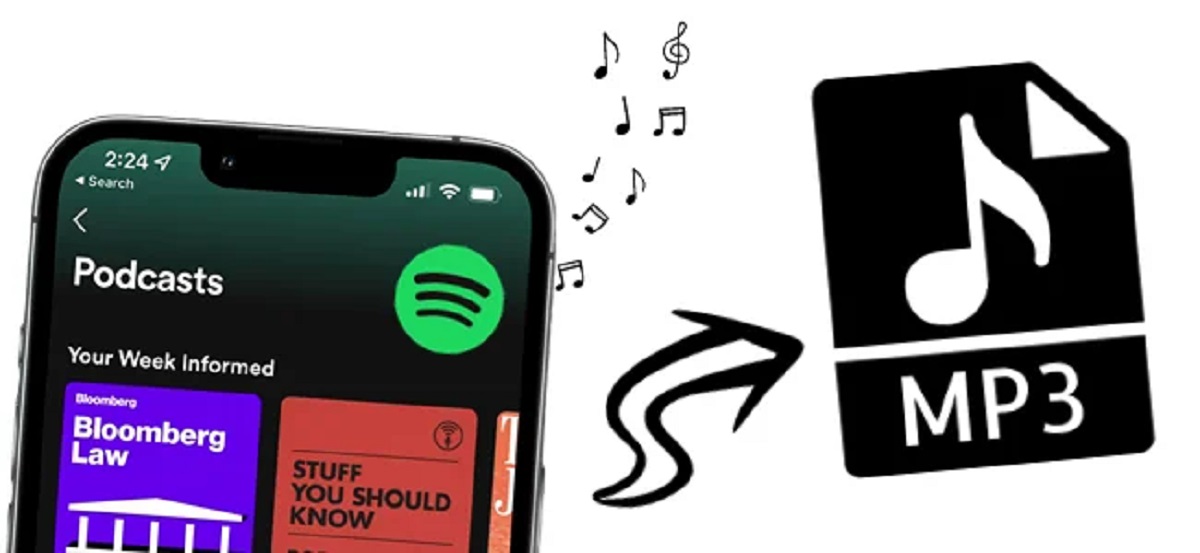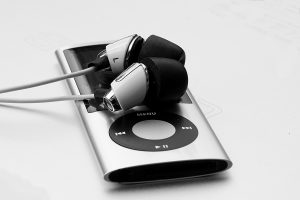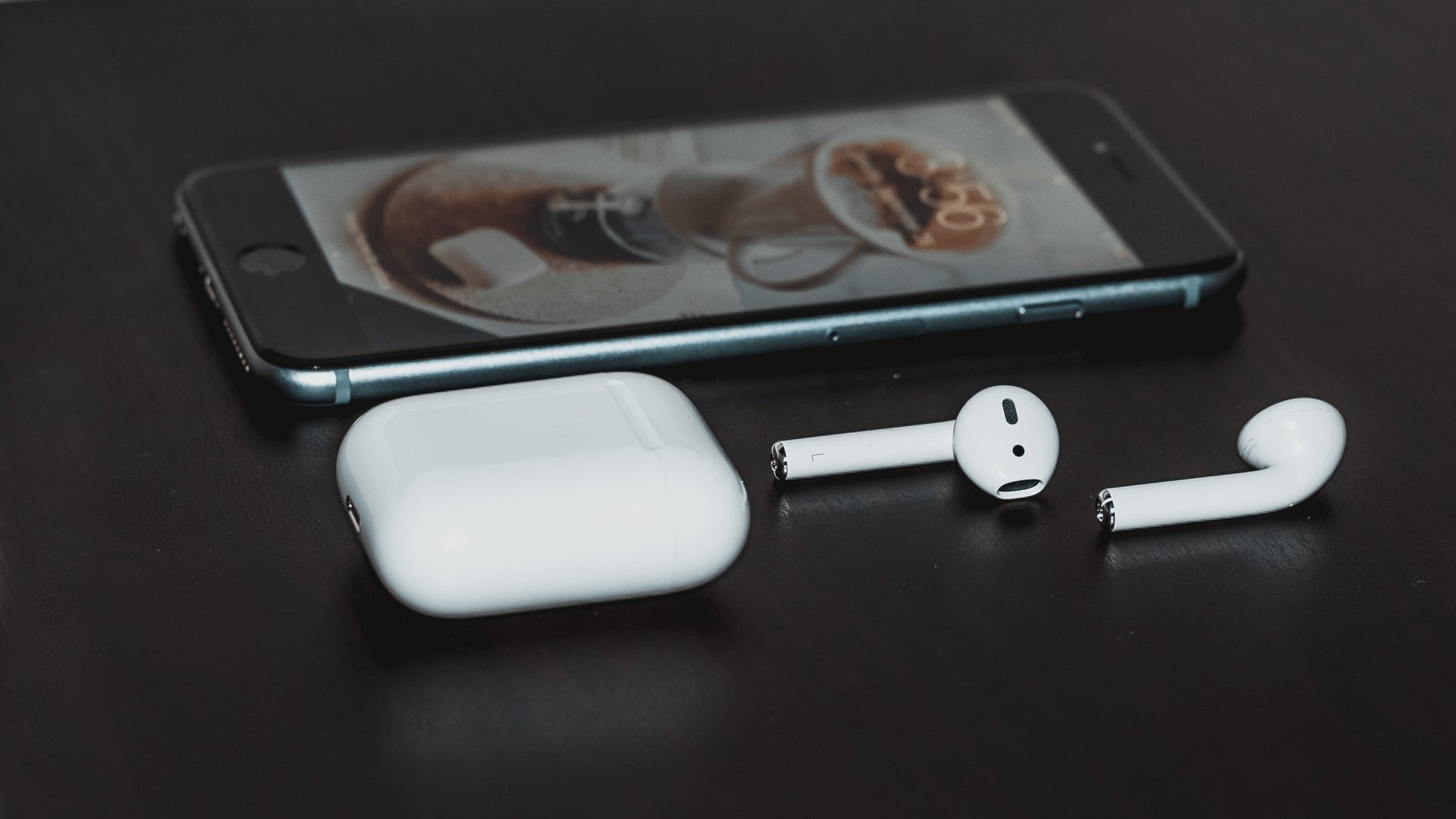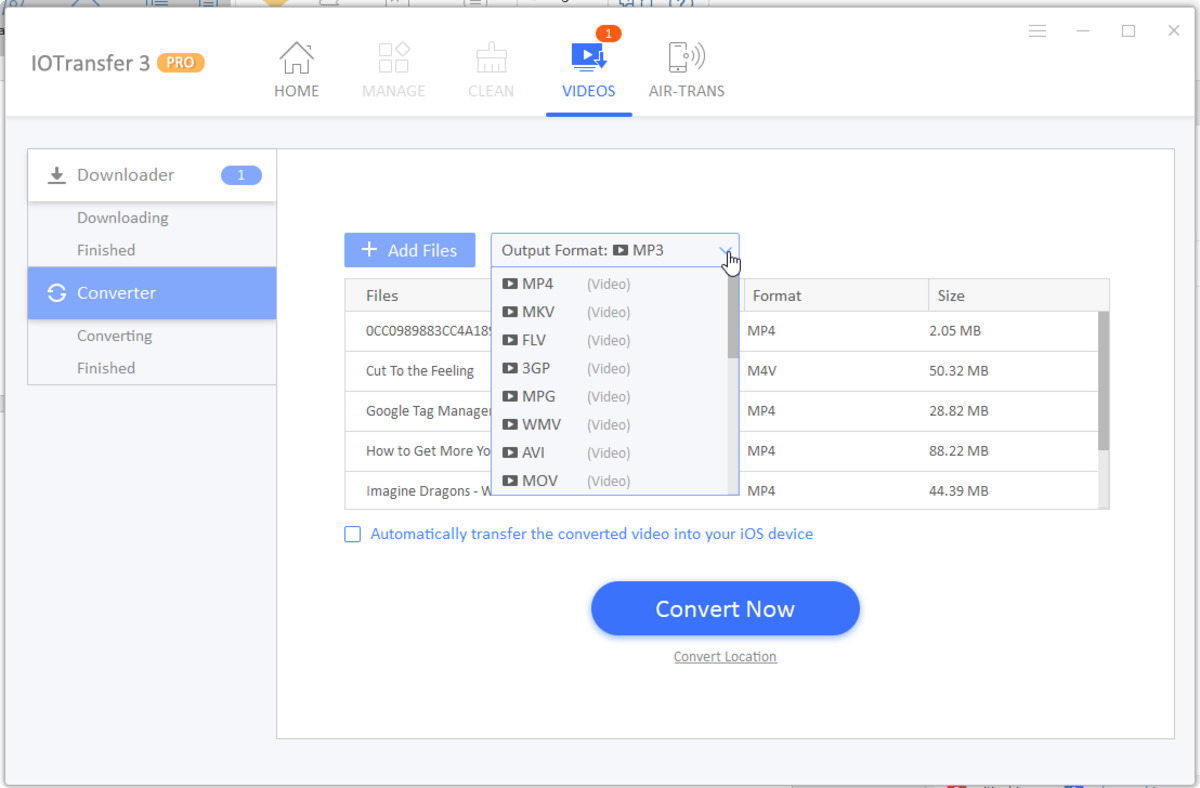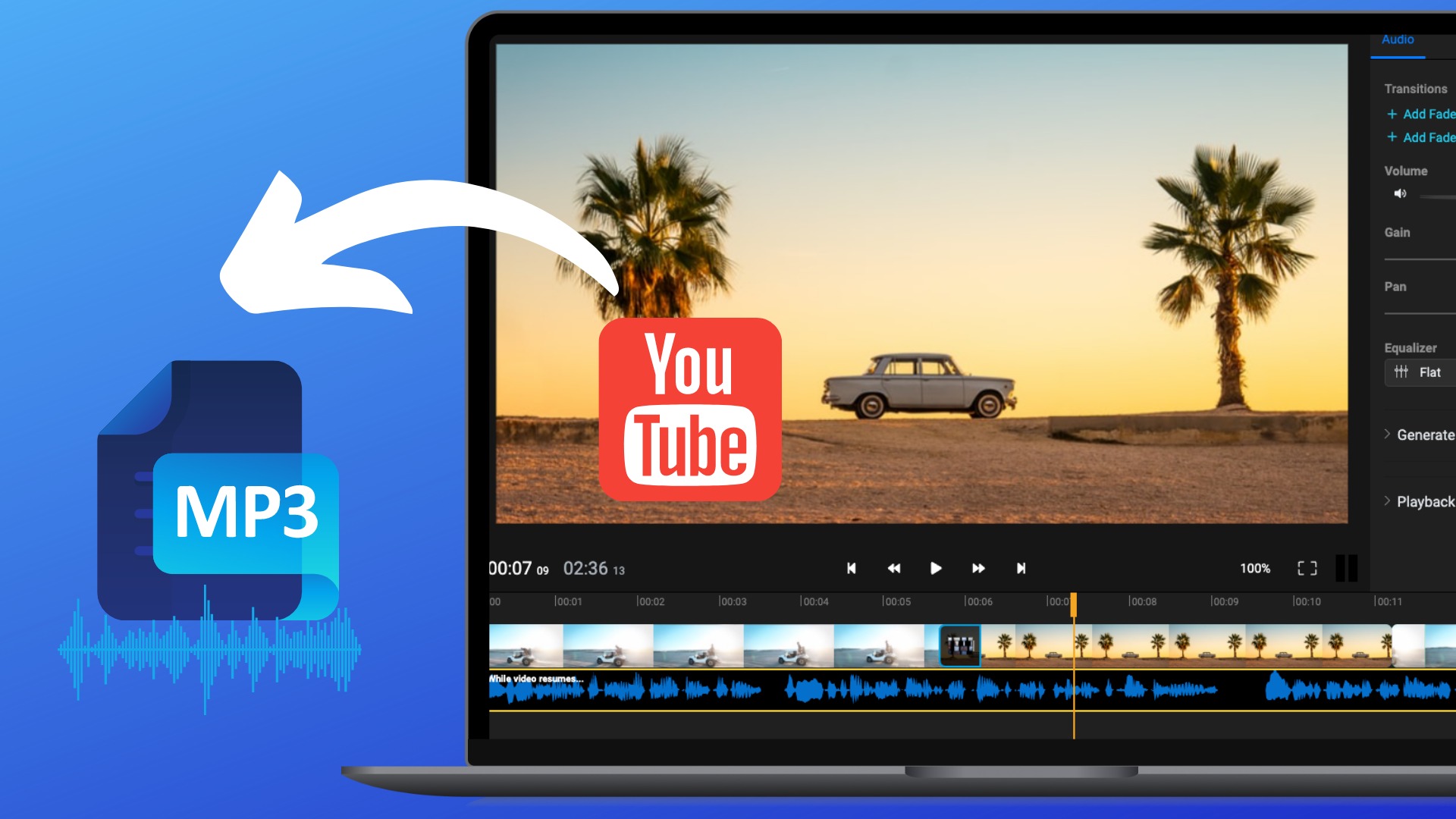Why Download Podcasts to MP3?
Podcasts have become increasingly popular over the years, providing a wealth of knowledge, entertainment, and inspiration right at our fingertips. From educational content to captivating storytelling, podcasts cover a wide range of topics that cater to diverse interests.
So why should you download podcasts to MP3? Here are a few reasons:
1. Portability: By downloading podcasts to MP3, you can take your favorite episodes with you wherever you go. Whether you’re commuting to work, hitting the gym, or embarking on a long journey, you can enjoy your preferred podcasts without relying on an internet connection.
2. Convenience: Downloading podcasts to MP3 allows you to create a curated collection of episodes that you enjoy. You can easily organize them into playlists or folders, making it effortless to access specific podcasts whenever you want. No more searching or streaming—just select, play, and enjoy.
3. Save Data: Streaming podcasts on-the-go can consume a significant amount of data, especially if you have limited data plans. By downloading the episodes to MP3, you can listen to your favorite content without worrying about using up your data allowance.
4. Offline Listening: Downloading podcasts to MP3 is a game-changer for those times when you have limited or no internet access. Whether you’re in a remote area, on a flight, or in an underground subway, having podcasts stored on your device allows you to stay engaged and entertained without relying on a stable internet connection.
5. Enhanced Audio Quality: When you download podcasts to MP3, you have control over the audio quality. You can choose high-quality files that ensure optimal listening experiences. Plus, you can listen to podcasts without interruptions caused by buffering or poor internet connectivity.
Overall, downloading podcasts to MP3 offers convenience, flexibility, and a seamless listening experience. It allows you to customize your podcast library, enjoy them anytime, anywhere, and make the most of your listening time.
What You Need to Get Started
Before you can begin downloading podcasts to MP3, there are a few essential things you’ll need:
1. A Device: To download and store podcasts, you’ll need a device with sufficient storage space. This can be a smartphone, tablet, or computer, depending on your preference and convenience.
2. A Podcast App: Choose a reliable podcast app that suits your device’s operating system. Some popular options include Apple Podcasts, Spotify, Google Podcasts, and Stitcher. Download and install the app from your device’s app store.
3. Internet Connectivity: To search and subscribe to podcasts, you’ll need an internet connection. Ensure you have a stable Wi-Fi connection or a mobile data plan to access the podcast app and browse available shows.
4. Headphones or Speakers: For an immersive listening experience, invest in a good pair of headphones or connect your device to quality speakers. This will enhance the audio quality and allow you to enjoy podcasts with clarity and depth.
5. Optional: Podcast Directories or Websites: In addition to using a podcast app, you can also explore podcast directories or websites to discover new shows. Websites such as Apple Podcasts, Spotify, and Podchaser allow you to browse and explore podcasts online, making it easier to find topics that interest you.
Once you have these essentials in place, you’re ready to dive into the world of podcasts and start downloading them to MP3. Take the time to configure your podcast app’s settings according to your preferences, such as automatic download options or notification alerts for new episodes.
Remember, the availability of certain features and settings may vary depending on the podcast app you choose. Familiarize yourself with the app’s interface and explore its functionalities to make the most of your podcast listening experience.
Step 1: Choose the Right Podcast App
When it comes to downloading podcasts to MP3, choosing the right podcast app is crucial. The app you select will be your gateway to discovering, subscribing to, and downloading your favorite podcasts. Here are some factors to consider when choosing a podcast app:
1. Compatibility: Ensure that the podcast app is compatible with your device’s operating system. Whether you use iOS, Android, or another platform, look for an app that is optimized for your specific system.
2. User-Friendly Interface: A podcast app with a clean, intuitive interface will make your listening experience much more enjoyable. Look for an app that offers easy navigation, organized categories, and a user-friendly search function to find podcasts quickly.
3. Subscriptions and Syncing: Subscribing to your favorite podcasts allows you to stay updated with new episodes. Look for an app that offers automatic syncing across multiple devices, so you can seamlessly switch between your phone, tablet, or computer without losing your subscriptions.
4. Download Options: Check if the app allows you to download podcasts directly to your device for offline listening. Look for options to control the download quality and storage location to optimize your storage space and ensure high-quality audio.
5. Playback Features: Consider the playback features the app offers. Look for options like variable playback speed, sleep timers, episode bookmarks, and customizable equalizer settings to enhance your listening experience.
6. Recommendations and Discoverability: Some podcast apps offer personalized recommendations based on your listening habits. Look for apps with robust discoverability features that suggest new podcasts and episodes based on your interests.
7. Social Sharing: If you enjoy sharing your favorite podcasts with others, consider an app that allows easy sharing to social media platforms or through messaging apps.
Take the time to research and test different podcast apps to find the one that aligns with your preferences and requirements. It’s worth trying out a few different apps to see which one suits your needs best. Remember, preferences may vary, so what works for someone else may not necessarily be the right fit for you.
Once you’ve identified the perfect podcast app, you can move on to the next step: finding and subscribing to your favorite podcasts.
Step 2: Find and Subscribe to Your Favorite Podcast
Now that you have chosen the right podcast app, it’s time to discover and subscribe to your favorite podcasts. Here’s how you can find and subscribe to podcasts within your chosen app:
1. Explore Recommendations: Many podcast apps have curated lists and recommendations to help you discover popular shows. Browse through these recommendations based on categories, genres, or topics that interest you. This can be a great way to find new podcasts that align with your preferences.
2. Search by Keywords: If you have specific podcasts or topics in mind, use the search function within the app. Enter relevant keywords or the name of a specific podcast you’re looking for. The app will display relevant results, allowing you to explore and select the podcast you want.
3. Browse Top Charts: Most podcast apps have a section that features the top podcasts in different categories or regions. Check out the top charts to see what’s trending and popular. This can help you discover podcasts that have gained significant traction and positive reviews.
4. Follow Recommendations: If you come across a podcast you love, check if the app offers a “recommended” or “similar” feature. This feature suggests other podcasts that are similar in content or style. You may find hidden gems that align with your interests and preferences.
5. Check Out Podcast Websites: Some podcasts have dedicated websites where you can find more information about the show, past episodes, and links to the podcast app of your choice. If you already have a favorite podcast in mind, visit their website to find direct links or instructions on how to subscribe within your chosen app.
6. Subscribe to Podcasts: Once you find a podcast that interests you, click on its title or image within the app. This will take you to the podcast’s page, where you’ll find more details about the show and the option to subscribe. Click the “Subscribe” or equivalent button to ensure you receive updates and new episodes as they are released.
7. Manage Subscriptions: As you subscribe to more podcasts, it’s important to manage your subscriptions effectively. Use the app’s subscription management features to organize your podcasts into playlists or folders. This will help you keep track of your favorite shows and make it easier to access specific episodes.
By following these steps, you can explore a wide range of podcasts, find shows that resonate with you, and ensure that you never miss an episode. Once you’ve subscribed to your favorite podcasts, it’s time to move on to the next step: downloading podcast episodes.
Step 3: Download Podcast Episodes
Now that you have subscribed to your favorite podcasts, it’s time to download episodes for offline listening. Here’s how you can download podcast episodes using your chosen podcast app:
1. Open the Podcast App: Launch the podcast app on your device and navigate to your subscribed podcasts or library section. This is where you’ll find a list of all the podcasts you have subscribed to.
2. Select a Podcast: Choose the podcast you want to download episodes from. This will take you to the podcast’s page, where you’ll see a list of all the available episodes.
3. Choose the Episode: Browse through the list of episodes and select the specific episode you want to download. In most podcast apps, you will see a download icon or a “Download” button next to each episode.
4. Start the Download: Click on the download icon or the “Download” button to initiate the download process. The app will start downloading the selected episode to your device. The time it takes to download the episode will depend on your internet connection speed and the size of the file.
5. Monitor the Download: While the episode is downloading, you can monitor the progress either on the podcast’s page or in the app’s download manager section. The progress bar or indicator will show you how much of the episode has been downloaded.
6. Download Multiple Episodes: If you want to download multiple episodes at once, some podcast apps offer the option to download an entire season or batch of episodes. Look for a “Download All” or similar option to download multiple episodes simultaneously.
7. Manage Download Queue: In case you want to prioritize your downloads or change the order in which episodes are being downloaded, you can manage the download queue within the app. This feature allows you to rearrange the download sequence as per your preference.
By following these steps, you can download podcast episodes to your device for offline listening. This allows you to enjoy your favorite podcasts without relying on an internet connection. Now that you have downloaded the episodes, let’s move on to the next step: converting podcasts to MP3.
Step 4: Convert Podcasts to MP3
Once you have downloaded podcast episodes to your device, the next step is to convert them to MP3 format. Converting podcasts to MP3 allows for compatibility with a wider range of devices and ensures easy playback. Here’s how you can convert podcasts to MP3:
1. Choose a Conversion Tool: There are several conversion tools available online that can convert audio files to MP3 format. Research and choose a reliable tool that suits your needs. Ensure it is compatible with your operating system and provides high-quality conversions.
2. Locate the Downloaded Episodes: Open the file manager or the storage location on your device where the podcast episodes are stored. By default, most podcast apps save downloaded episodes in a specific folder or directory.
3. Select the Episodes for Conversion: Choose the downloaded podcast episodes that you want to convert to MP3 format. You can select individual episodes or convert them in batches, depending on your preference.
4. Upload and Convert: Launch the selected conversion tool, and follow the instructions provided by the tool to upload the chosen podcast episodes. The tool will guide you through the process of selecting the output format (MP3) and other conversion settings.
5. Start the Conversion: Once you have configured the desired settings, click on the “Convert” or equivalent button to begin the conversion process. The tool will convert the selected podcast episodes to MP3 format.
6. Monitor the Conversion: Depending on the size and number of episodes you are converting, the process may take some time. Monitor the progress of the conversion in the conversion tool’s interface. In some cases, you may also receive a notification or be able to track the progress in a status bar.
7. Store the Converted MP3 Files: Once the conversion is complete, the tool will provide you with the converted MP3 files. Choose a suitable location on your device where you want to store the MP3 files. Consider creating a separate folder or directory specifically for your podcast downloads to keep your files organized.
By following these steps, you can easily convert downloaded podcast episodes to MP3 format. Once the conversion is complete, you’ll be able to enjoy your favorite podcasts as MP3 files on any device that supports MP3 playback. Now that you have converted the podcasts to MP3, it’s time to transfer them to your preferred device for on-the-go listening.
Step 5: Transfer MP3 Podcasts to Your Device
After converting your downloaded podcast episodes to MP3 format, the final step is to transfer them to your preferred device for on-the-go listening. Here’s how you can transfer MP3 podcasts to your device:
1. Connect your Device: Connect your device, such as a smartphone, tablet, or MP3 player, to your computer using a USB cable or through a wireless connection like Bluetooth or Wi-Fi. Ensure that your device is recognized and accessible by your computer.
2. Open File Manager: On your computer, open the file manager or file explorer program that allows you to browse the contents of your device. This could be Windows Explorer (Windows), Finder (Mac), or a similar program depending on your operating system.
3. Locate the MP3 Files: In the file manager, navigate to the location on your computer where the converted MP3 files are saved. This is usually the folder or directory you selected during the conversion process.
4. Select and Copy the MP3 Files: Select the MP3 files you want to transfer to your device. You can choose individual files or select multiple files by holding down the Ctrl (Windows) or Command (Mac) key while clicking on the files. Right-click on the selected files and choose the “Copy” option.
5. Paste the MP3 Files to your Device: In the file manager, navigate to the location on your device where you want to transfer the MP3 files. This can be the device’s internal storage or an external memory card. Right-click on the destination folder or location and choose the “Paste” option to transfer the MP3 files from your computer to your device.
6. Wait for the Transfer: Depending on the size and number of MP3 files, the transfer process may take a few seconds to several minutes. Allow the transfer to complete before disconnecting your device from the computer.
7. Safely Remove your Device: Once the transfer is complete, safely disconnect your device from the computer by following the appropriate steps for your operating system. This ensures that the files are properly saved and prevents any data loss or corruption.
After completing these steps, the MP3 podcasts will be stored on your device and ready for playback. You can use the media player or a podcast app on your device to access and enjoy the podcasts whenever and wherever you choose.
Conclusion
Downloading podcasts to MP3 format allows you to enjoy your favorite shows anytime and anywhere without relying on an internet connection. By following the steps outlined in this guide, you can easily download, convert, and transfer podcasts to MP3 format for seamless offline listening.
In the first step, you learned the importance of choosing the right podcast app that suits your device and preferences. Then, in step two, you discovered various methods to find and subscribe to your favorite podcasts, ensuring you never miss an episode.
Step three guided you through the process of downloading podcast episodes onto your device, offering convenience and the freedom to listen even without an internet connection. In step four, you learned how to convert those downloaded episodes to the widely compatible MP3 format.
The final step, step five, focused on transferring the MP3 podcast files to your device of choice, enabling you to enjoy them wherever you go. Whether you’re commuting, traveling, or working out, you’ll have your favorite podcasts ready for on-the-go listening.
Remember, each app and device may have slight variations in features and procedures, so familiarize yourself with the specifics of your chosen podcast app and device. Additionally, regularly update your podcast app and subscriptions to stay connected with new episodes and discover new shows.
With the ability to download and convert podcasts to MP3 format, you can make the most of your podcast listening experience. So go ahead, follow these steps, and immerse yourself in the world of captivating stories, informative discussions, and inspiring conversations that podcasts have to offer.







